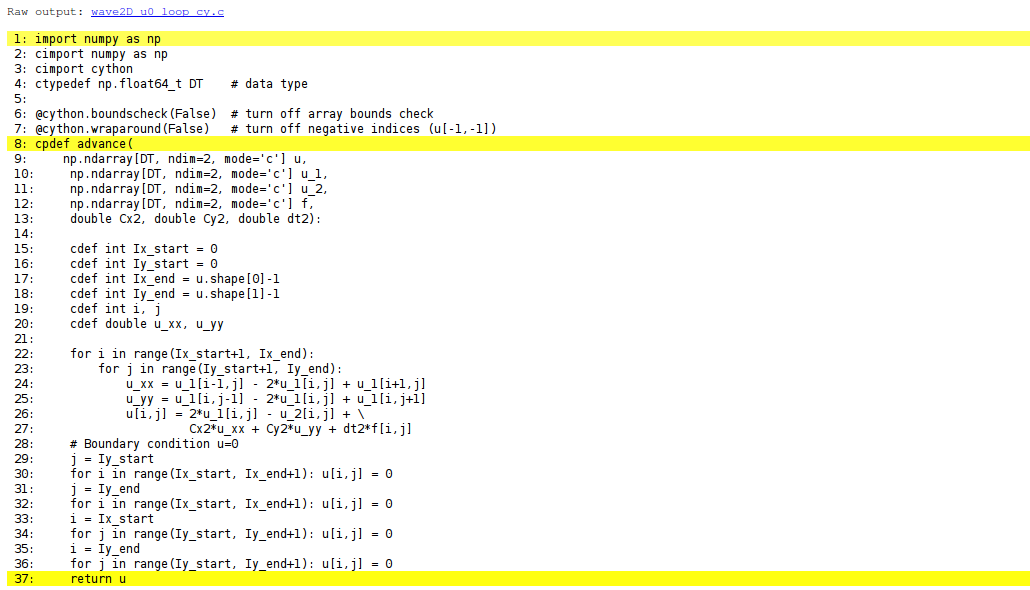Visual inspection of the C translation
See how effective Cython can translate this code to C:
Terminal> cython -a wave2D_u0_loop_cy.pyx
Load wave2D_u0_loop_cy.html in a browser (white lines
indicate code that was successfully translated to pure C, while
yellow lines indicate code that is still in Python):

Can click on wave2D_u0_loop_cy.c to see the generated C code...